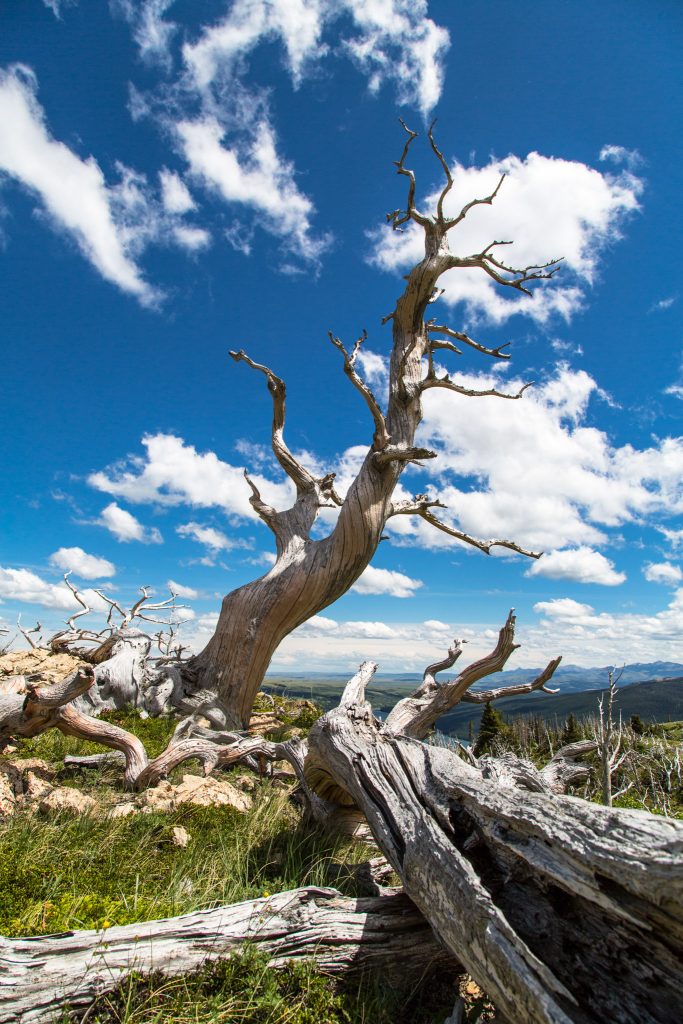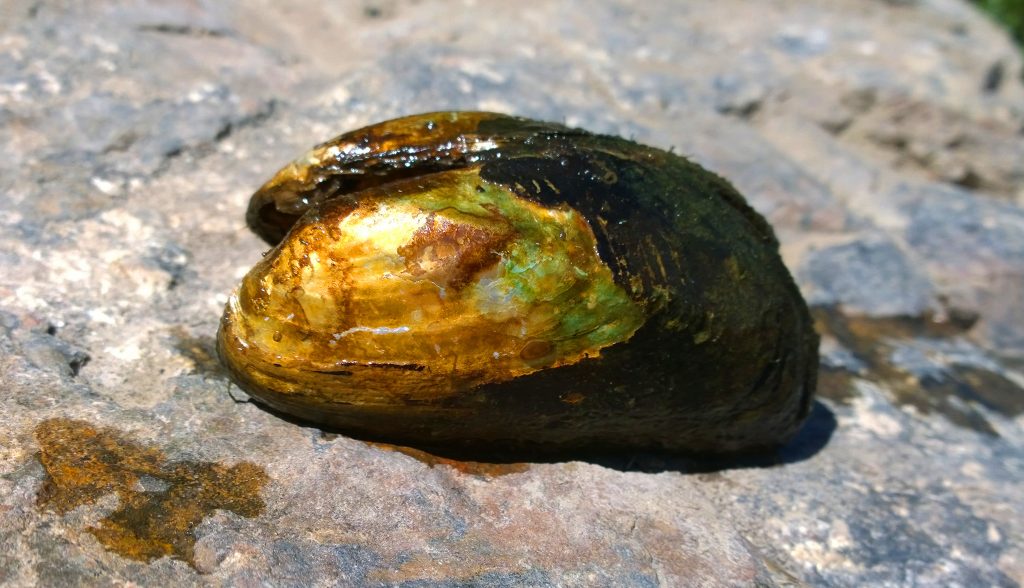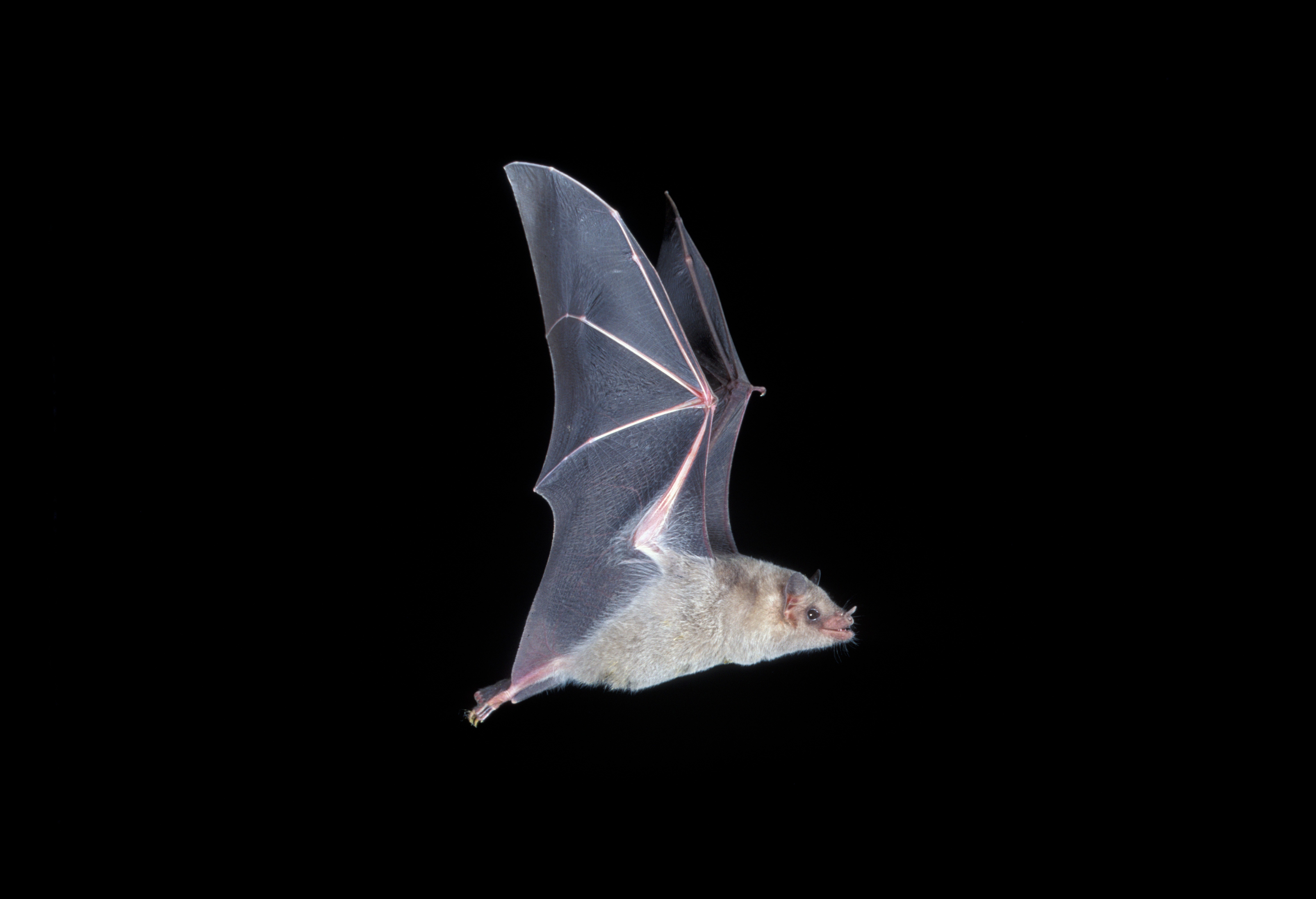By Christian Thorsberg
Medill Reports
In Coahuila, Mexico, a faint emergence of sound — swoosh, swish, swoosh — slices through arid air convecting in the Chihuahuan Desert’s chilly nocturne. Swish, swoosh, this consonance soundtracks the faint visions briefly sashaying — pink, brown and white blurs and flurries — across the rocky landscape.
The 3-inch tall Mexican long-nosed bat — furry and pregnant, just finishing another 30-mile leg of her 750-mile flight northward — crash-lands nightly with a muffled swoop into the bright yellow flower clusters of native agave plants. She reaches with her long muzzle — slip, slurp — and quietly sucks the flowers’ sugary nectar before finding a nearby colony to spend the night.
The locals in rural Coahuila and neighboring Nuevo León, many of them lifelong residents who know the land intimately, had no idea they shared their homes with this colony. Not until viewing the bat footage from Kristen Lear’s infrared cameras, set on tripods some 30 feet from agave plants—Lear and her team watching attentively in fold-out chairs on a steep hillside—did the residents realize the bat’s migration corridor, spanning Central Mexico to the Southwest United States, runs right through their slice of nightfall.
“When we showed (community members) the videos, they were so amazed and kind of proud that they had something like this on their land,” said Lear, an endangered species interventions specialist with Bat Conservation International. “The bats are so graceful and clumsy at the same time. I think they really bring people together.”
Though this cultural heart-hold is only just budding, the Mexican long-nosed bat has long been an unsung ecological hero in Mexico and the American Southwest’s desert and montane ecosystems. Their clunky landings, though optically goofy, play an important role in pollination.
“When these bats throw themselves on the agave flowers, they’re getting covered in pollen,” Lear said. “They (the bats) can fly 30 to 40 miles in one night, so they’re spreading that pollen over a wide distance and really helping mix those agave genes.”
But this symbiotic relationship is at risk. Widespread drought and a greater incidence of wildfires, a result of global warming — in addition to humans over-farming agave sugars used to make mezcals — are shrinking the plant’s habitats and the Mexican long-nosed bat’s food source. The result is a positive feedback loop in a desert that, with fewer and fewer agave to maintain the health of shrubbery and streams, is experiencing rapid soil erosion and waterway pollution. Meanwhile, scientists estimate fewer than 5,000 Mexican long-nosed bats are alive today, and the species’ future is uncertain.
“It’s like a 1-2-3 punch,” Lear said. “The bat is a keystone species. If something happens to them, it’s going to have a cascading effect on our deserts.”
– – –
The Mexican long-nosed bat is one of 10 species “imperiled by climate change” in the United States this year, according to a report published in December by the Endangered Species Coalition (ESC). Written in partnership with six organizations — including the Sierra Club, National Plant Society and the American Bird Conservancy — the report was curated over a span of six months. More than a dozen scientists were consulted to finalize the list of “imperiled” species — those whose populations are already dwindling as a result of climate change and may face extinction in the coming years without any form of drastic intervention.
Publishing the report soon after the COP26 climate conference in Glasgow and the Biodiversity Conference in Kunming, China, was especially important, said Derek Goldman, one of the report’s authors and the ESC’s national field director and Northern Rockies senior field representative.
“A big driver of the biodiversity crisis is climate change,” Goldman said. “And we need to address these twin issues of climate change and biodiversity loss together if we’re going to have any hope of stemming the tide.”
Goldman said it was also crucial to fill the report with lesser-known endangered species. Other than the monarch butterfly, many of the listed species are less recognizable, including the Sierra Nevada yellow-legged frog, the western ridged mussel, the Maui parrotbill, Ka palupalu o Kanaloa, elkhorn coral and Goodding’s onion. “The report shows that the impact of climate change on biodiversity spans a whole plethora of taxa,” Goldman said.

Goldman lives in high-altitude Montana, among forests of whitebark pine trees, another species included in the report. Already, 85% of the trees have disappeared from their historic range in the Pacific Northwest and Big Sky country, and 51% of standing whitebarks are dead— a result of infestations of beetles and fungi that are increasingly thriving in fluctuating, warmer conditions driven by climate change.
One of Goldman’s ESC shirts depicts a polar bear on a shrinking ice cap. Occasionally he wears it while backpacking through the Rockies, where he increasingly observes Clark’s nutcrackers and squirrels pecking frustratedly at dead whitebarks for nonexistent seeds and foods.
“Eventually,” Goldman said, “they (starving animals) will fall over and die as well.”

Emilie Blevins, a senior conservation biologist with Xerces Society, an organization that advocates for invertebrate conservation, said she had spent much of her professional career in Idaho and Washington’s low-altitude banks and streams. She swims atop western ridged mussel beds, a now rare sighting as warming waters and rising tides continue to shrink the bivalves’ natural habitat, cutting their population nearly in half.
Sometimes Blevins stops to pick up a mussel, carefully removing its foot from sediment and holding the strong, triangular shape in her palm. Occasionally one will open its mouth, just for a moment, to squirt water at her, before sealing itself away.
“I don’t take it personally,” Blevins said. “These guys can live for over 60 years. I mean, they could be as old as your grandfather!”
But these days, the absence of bivalves concerns her. How will the rivers survive without the mussels filtering water? How will the fish populations receive nutrients without the mussels concentrating food for them? How will the local tribes continue to practice their culture without the mussels for food and ornamentation?
“Working in conservation biology can be depressing,” Blevins said. “But we still have the potential to make a difference. I’m overjoyed when I still see western ridged mussel beds. They give me hope.”
“There’s plenty of science about how very essential a connection to nature is for our mental and emotional health,” said Leda Huta, the ESC executive director. “We see ourselves as separate from nature. People forget that animals include humans, that nature includes humans. And that nature makes us happy.”
Christian Thorsberg is a science and environmental graduate student at Medill.


